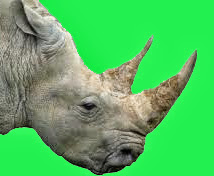Rhino horn
consists of compressed hair known as keratin, calcium and melanin. Rhinoceros,
often abbreviated as rhino, is a group of five extant species of odd-toed
ungulates in the family Rhinocerotidae. Two of these species are native to
Africa and three to Southern Asia.
In Africa we
are currently seeing the methodical and calculated reduction of rhino numbers
in their natural habitat. The number of poached numbers has been escalating
year-on-year over the past 5 years.
It is true
that we have experienced severe poaching pressure before, and defeated it.
However today, because of the insanely inflated price being paid for rhino
horn, the poachers are now employing a diversity of methods which no longer
fall within the traditional poaching mould. Banked-rolled by substantial
finances, the modern day poacher can now afford the latest technology and buy
the services of skilled people and influential officials.
Rhino poaching
The demand
for rhino horn emanates from a few Asian countries (east and south East Asia ).
There are many apparent reasons for the need for rhino horn, but it is used
mainly as an ingredient in traditional medicines and not as an aphrodisiac as
is often widely reported. In more recent times it is being marketed to cure
non-traditional conditions such as cancer.
Rhino horn
is valuable because of the simple economics of the situation – demand far
exceeds supply.
South Africa
has the largest rhino population in the world of both white and black rhino. We
have traditionally been seen as a difficult environment within which poachers
could operate. As the easier targets (i.e. other countries) have lost all their
rhino, so the demand has shifted to South Africa . We also know that crime of
all types is rampant in this country and rhino poaching is an extension of
this.






.jpg)



